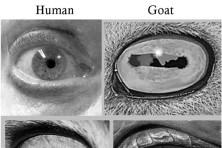Science Snippet: Dec. 18, 2015
- Share
- Tweet
- Pin
- Share

Is it possible that your pet pug, with its pushed in face and great big eyes, is actually a distant cousin of a prehistoric wolf? Based on genetic and archaeological studies, the answer is yes. The DNA of modern domesticated dogs and ancient wolves is 99.9 percent identical. To date, studies show that between 18,000 and 35,000 years ago gray wolves began interacting with primitive hunters and gatherers. Future archaeological studies may discover that this occurred even earlier in time. Exactly how domestication occurred is a matter of speculation. Did ancient people capture and raise a few wolf pups that chose to stay with their “people” as they moved from place to place seeking food? Or did a band of hungry wolves begin to hang around groups of ancient people, eating scraps and human feces (which still have some nutritional value)? Over hundreds of years, these wolves may have grown close to bands of primitive people, remaining healthy thanks to a diet of discarded carcasses and feces. Because of the availability of food, these wolves reproduced, and their offspring learned to trust the people who provided their food. In times of abundance, the “domesticated” wolves served their people by keeping campsites clean and providing an early warning system by barking at intruding animals. Although early “dogs” closely resembled wolves, it was not long before man began to interbreed dogs that showed variation from the “wolf standard,” and today there are dozens of breeds that are very unlike their wolf cousins. Some have been bred to carry sleds, while others were selected for small size and a pushed in face. (Science, April 17, 2015; The Scientist, Nov. 14, 2013; pbs.org/wgbh/evolution, Jan. 5, 2015)

